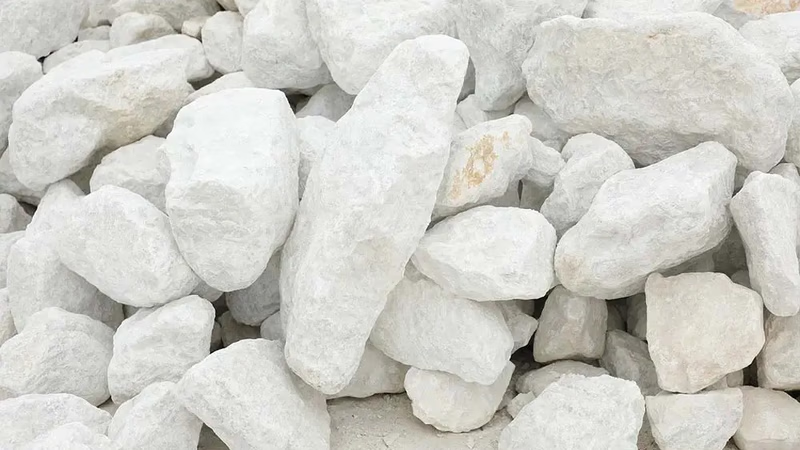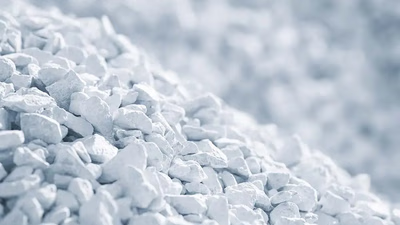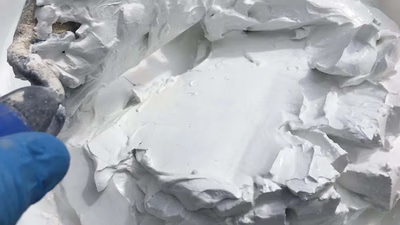
Lime production processes in major markets like China and India.
China is known as the largest consumer of lime in the world. Due to the industrial growth of China and the needs of construction and various industries, the consumption of lime in this country is very high. India is also one of the largest consumers of lime in the world. This country has various industries including construction, steel making, agriculture and chemical industries that need lime. The United States of America is also one of the largest consumers of lime in the world. Various industries such as construction, steel industry, chemical industry and agriculture in America use lime. Russia is also among the largest consumers of lime in the world. This country has industries such as steelmaking, chemical industry, railway and construction that need lime. Brazil is also one of the largest lime consuming countries in the world. This country uses lime in sectors such as construction, steelmaking, agriculture and chemical industries.
These countries have their own mineral deposits of lime and usually supply the domestic production of lime. These countries are also known as lime producers and may also import lime if needed. China, India, America, Russia and Brazil have significant lime mineral reserves and lime production is provided within these countries. However, in certain cases and due to higher demand, these countries may also import lime from other countries. Participation in events and industrial exhibitions related to the lime industry can be a good opportunity to communicate with international buyers. These events are useful as a place to identify and meet international customers and exchange information and industry experiences.
First, lime mines are identified and geological and mineral explorations are conducted to determine the quantity, quality and location of lime deposits. After exploration, the stage of lime extraction from the mine begins. Lime extraction may be done in a variety of ways, including chipping, drilling, and loading. The extracted lime is crushed into smaller pieces. This process can include primary crushing using stone crushers and secondary crushing using mills and other equipment. The crushed lime is then prepared for subsequent processes. This includes washing, removal of unwanted particles, drying and possibly various other processes. After preparation, the lime is cut into different shapes. This can include the production of modified lime, hydrated lime, lime powder or other special granulation. Then, the lime is packaged to be sold in the market. Packed lime is marketed at this stage. Distribution and marketing of lime is done to various consumer industries, wholesalers and retailers.
Using e-commerce platforms such as B2B (Business-to-Business) websites can help you connect directly with lime buyers around the world. You can publish specifications and information about your lime products on these platforms and negotiate with potential buyers abroad. You can use foreign trade services such as trading factories, trading companies and trading consultants. These people and organizations can help you find international buyers, communicate and negotiate international contracts. Establishing business connections with other companies and traders in the lime industry can help you reach international buyers. Attending conferences, seminars and industry gatherings can be a good opportunity to network and communicate with people who are looking to buy lime.
-

The lime market in West Asia is experiencing significant growth due to increasing demand from the construction, cement, and chemical industries. Key factors driving this demand include population growth, infrastructure development, and civil projects. Major producers in the region include Saudi Arabia, Iran, Iraq, Qatar, Oman, Turkey, and Egypt, which are known for their rich limestone deposits. Saudi Arabia stands out as a leading global producer with substantial reserves in regions like Hafr al-Batin and Ha"el. Oman’s Jabal Al-Akhdar is also notable for its limestone resources. The competitive landscape is intense due to numerous local producers and importers, which can lead to price pressures and quality challenges. To enhance competitiveness, improvements in product quality and production processes are essential. Transportation issues such as inadequate infrastructure and security concerns pose additional challenges for lime distribution.
Countries like Pakistan also play a role in the regional market by exporting lime to neighboring nations. Regulatory differences and security issues further complicate international trade within West Asia. Addressing these challenges through better customs facilities and unified regulations can facilitate smoother trade operations. Ultimately, maintaining high quality and competitive pricing will be crucial for producers aiming to secure their market position amidst fierce competition. "
-

China, India, the USA, Russia, and Brazil are the largest consumers of lime globally, driven by their industrial sectors such as construction, steelmaking, and agriculture. These countries possess significant lime mineral reserves and typically meet their domestic demand through local production. However, they may also import lime to satisfy higher demand. Engaging in industrial exhibitions related to the lime industry offers opportunities for networking with international buyers and exchanging valuable insights. The process of lime extraction involves identifying mines, conducting geological explorations, and utilizing various methods for extraction and processing. After extraction, lime is crushed, prepared, and packaged for distribution to various consumer industries. E-commerce platforms like B2B marketplaces facilitate direct connections between lime producers and global buyers by allowing them to publish product specifications and negotiate deals. Additionally, leveraging foreign trade services can enhance access to international markets. Establishing business relationships through conferences and industry events is crucial for expanding market reach.
-

China, Russia, and India lead global lime production, with significant reserves in regions like Henan, Ural, and Rajasthan. The United States and Japan also contribute notably to lime supply. Various forms of lime, including raw, hydrated, calcined, and transgenic lime, serve diverse industrial applications such as construction and agriculture. Hydrated lime is particularly in demand due to its versatility. High-quality lime, known as "White Lime," is sourced from Italy"s Carrara region and Mexico"s Yucatan region, recognized for their purity and exceptional properties. Vermont in the U. S. and Finland"s Pargas area also produce high-quality lime used across multiple industries.
Understanding these regional strengths can enhance trade opportunities within the Middle East and West Asia markets. "
-

Lime, a crucial chemical compound (CaO), is extensively exported by major producers like the US, China, India, and Brazil. Its significant export value stems from its diverse applications across various industries. In construction, lime is essential for producing cement, mortar, and other building materials. The cement industry heavily relies on lime as a raw material during the calcination process, making it vital for concrete production and infrastructure development. Additionally, lime plays a key role in the steel industry as an alloying agent that helps purify steel by absorbing impurities during refining. Its use extends to glass manufacturing, where it regulates properties and enhances production processes. Furthermore, lime is utilized in water treatment facilities as a purifying agent and in the paper industry for bleaching and pH control. Countries with abundant lime resources can leverage these applications to boost their export capabilities and meet international demand effectively.




